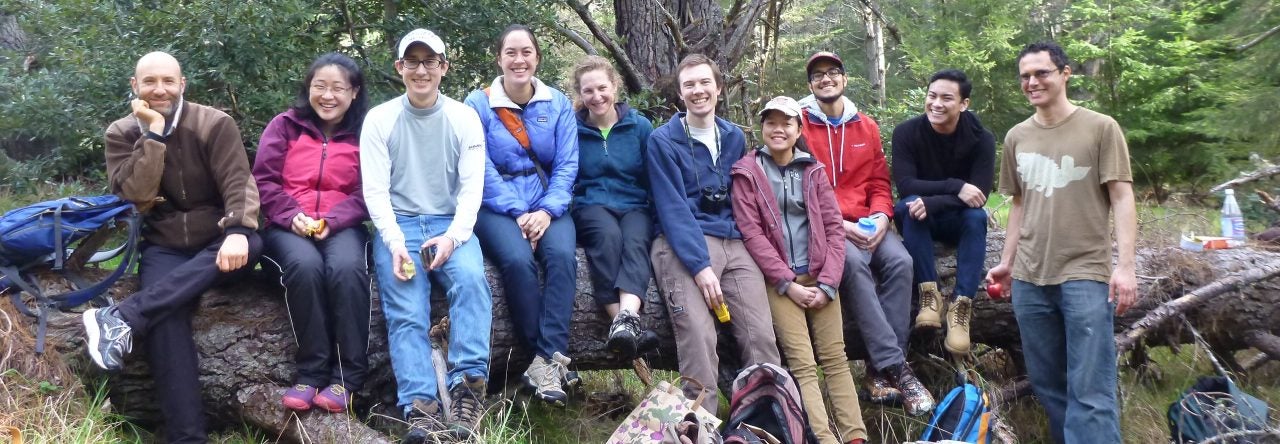The latest issue of NRG has a primer on genome annotation principles and software:
http://www.nature.com/nrg/journal/v13/n5/full/nrg3174.html?WT.ec_id=NRG-201205

The latest issue of NRG has a primer on genome annotation principles and software:
http://www.nature.com/nrg/journal/v13/n5/full/nrg3174.html?WT.ec_id=NRG-201205
Here is another attempt at the melanogaster group phylogeny:
http://www.ncbi.nlm.nih.gov/pubmed/21985965
Unfortunately, it does not tell us anything we don’t already know. Let us hope that a proper phylogenomic analysis using the new genome sequences will finally nail down those pesky internal nodes.
The review paper on the role of DM-domain genes in the development and evolution of sexual dimorphism is published in Trends in Genetics:
http://www.cell.com/trends/genetics/abstract/S0168-9525%2812%2900017-0?script=true
And check the journal cover for a nice picture of the sex comb of D. ficusphila:
http://www.cell.com/trends/genetics/issue?pii=S0168-9525%2812%29X0004-0#
This quarter, WCB will be 3-4 pm on alternate Fridays. Dave led the first club session with a lucid explanation of why sticklebacks are goofy. We will resume April 27.
Angus receives the College of Biological Sciences Dean’s Mentorship Award for his work with undergraduate students. This award fosters excellence in research and mentorship for undergraduate students seeking careers in the sciences. Congratulations to Angus and his undergraduate colleagues, Pam and Nancy!
This year’s lab snowshoe trip was moderately successful. As luck would have it, the first major storm of the season rolled in just as we were ready to head to Peter Grubb cabin for an easy overnighter. The good news is that everyone came back in one piece; not so good news is that we did not even make it to the cabin after wallowing waist-deep in fresh snow for half a day. See Thad’s Snow Awards post for details. Let’s hope we have better luck next year.
And in the meantime – it’s time to start planning our summer backpacking trip. Let’s see what natural disasters that will precipitate.
Angus wins the 2011-2012 Chancellor’s Achievement Award for Diversity and Community! This award recognizes contributions in enhancing inclusiveness and diversity within the campus community, and is awarded to one and only one graduate student each year. Angus received the award at the reception held at the Chancellor’s Residence. This was the first time I saw him wearing a tie.
Last weekend the Kopp Lab and friends took a snow-shoeing trip to the Sierras. We hiked around for seven hours, but still couldn’t locate our cabin. For fun I’m dishing out awards.
For continuous trailbreaking all day long.
For providing clutch assistance with knives and rope to help repair broken equipment. Also he carried fire-starting implements.
For smiling and laughing the whole way up the mountain, down the mountain, back up the mountain, then back down the mountain.
For driving both to and from the trailhead, and doling out encouragement to us slowpokes.
No explanation needed.
We hope everyone will have the chance to come next year!
Another invention based on the MiMic gene trap system. From the abstract:
GFP traps have mainly been used to study the endogenous expression patterns of trapped genes or the subcellular localization of their protein products. Here, we show that the GFP tag can also be used to interfere with gene function by RNAi-mediated knockdown of the tagged transcripts. This method, which we refer to as “tag-mediated loss-of-function,” addresses major shortcomings of the classical RNAi approach in which gene-specific sequences are targeted.
The basic idea is that you modify your favorite gene in vivo so it becomes tagged with GFP, and then direct your RNAi targeting constructs against the GFP tag rather than the protein itself.
This paper (summarizing many years of work) describes the combinatorial code that controls the expression of olfactory receptor proteins in the fly sensory system. It is unknown at present how much OR expression patterns differ between species. But if they do, this code would suggest a clear mechanism for their evolution.
Powered by WordPress & Theme by Anders Norén